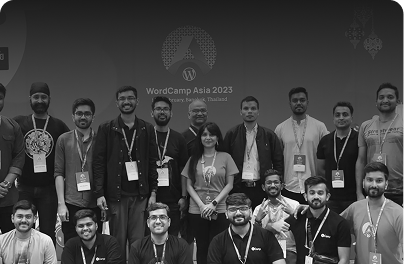Drupal 7 EOL: Choosing WordPress over Drupal 10
Drupal 7 has served as a powerful and versatile enterprise content management system for over a decade. However, Drupal 7 reached its end of life (EOL) on January 5, 2025. This presented a critical decision for enterprises — migrate to Drupal 10 or explore alternative solutions. WordPress emerges as a strong contender, offering a user-friendly interface, robust enterprise security and performance, with a thriving development community.
Drupal 7 & Drupal 10 are worlds apart
Drupal 7 and Drupal 10 are worlds apart in terms of CMS technology. When comparing Drupal 7 vs Drupal 10, enterprises aiming to modernize their web properties might find these upgrades appealing. However, upgrading from Drupal 7 to Drupal 10 demands as much work as a full CMS migration, if not more.
Drupal 10 adopts a different database schema with updated Twig templates. Issues will arise with PHP module compatibility, text formatting conflicts, duplicate comment fields in content types, and file location discrepancies. The core Migrate API doesn’t fully support views migration. Incompatible field types and widgets can also cause problems. Finding developers proficient in both versions of Drupal may pose challenges, as custom modules need to be redeveloped. Upgrading from Drupal 7 to Drupal 10 may also raise development costs, and should be carefully considered.
On the flip side, Drupal 7 end of life presents an opportunity to consider alternative CMS platforms. We explore how Drupal 7 to WordPress migration might better serve your website, considering common Drupal 10 issues.
Responsive design support – Drupal 10 vs WordPress
Drupal 7 offered limited responsive support, requiring manual adjustments to themes. This approach demanded significant effort and technical knowledge, posing challenges for efficient site management. Transitioning to Drupal 10, the introduction of modern themes like Olivero offers out-of-the-box responsiveness. However, it still falls short compared to WordPress.
WordPress excels in responsive web design, providing superior theme support. With its extensive range of responsive themes, WordPress simplifies the creation and maintenance of mobile-friendly sites for both developers and content managers, while maintaining improved site performance. This advantage allows businesses to ensure a seamless user experience across all devices with minimal effort.
In contrast, even with the advancements in Drupal 10, WordPress remains the more efficient choice for responsive web design needs.
Core framework changes & backward compatibility
Drupal 10 represents a significant shift from Drupal 7’s custom framework to the Symfony-based architecture. This change requires developers to become familiar with Symfony, an events-driven PHP framework, and adjust their approach to development accordingly. The learning curve associated with Symfony can be steep, adding complexity to the migration process.
Existing custom code and modules from Drupal 7 need to be redeveloped or significantly modified to be compatible with Drupal 10’s architecture. This adds another layer of effort and complexity, as developers must ensure that their code adheres to Symfony’s conventions and practices. The transition from Drupal 7’s custom framework to Drupal 10’s Symfony-based system thus requires more extensive code refactoring and functional testing, making the migration process more challenging.
In contrast, migrating from Drupal 7 to WordPress avoids the need to deal with a major web framework change. WordPress has evolved incrementally, maintaining a consistent core framework that is easier to understand and work with.
WordPress has consistently prioritized backward compatibility, ensuring that new versions support older plugins and themes. This commitment allows users to upgrade without disrupting their existing sites. This continuity simplifies the migration process for developers and site editors, while giving stability and time to adapt to your development teams.
It also reduces update-related maintenance issues and increases confidence in long-term plugin and theme compatibility. Site editors experience a gradual learning curve with ability to adopt incremental changes to WordPress.
Challenges for developers & increased costs
Drupal 10 introduces significant architectural changes. The integration of the Symfony framework and updated Twig necessitates a shift from procedural to object-oriented programming. These changes pose challenges for developers accustomed to Drupal 7.
Furthermore, Drupal 10 enforces stricter coding standards. These new practices aim to enhance performance, security, and maintainability. Consequently, developers must adapt to these stringent requirements. The deprecation of outdated code compounds the complexity of upgrading custom modules.
For organizations currently utilizing Drupal 7, the upgrade process is not straightforward. It often demands substantial redevelopment efforts. This situation may require retraining existing staff or hiring new developers familiar with Drupal 10’s ecosystem. In some cases, migrating to alternative platforms like WordPress may prove more feasible for enterprises.
Drupal modules vs WordPress plugins
In Drupal 7, the PHP module was used to embed PHP code for dynamic content, block visibility, and custom views plugins. Using the PHP module in Drupal 10 poses serious risks. It can cause security and performance issues and lead to fatal errors and broken pages due to malformed code. Replacing the PHP module in Drupal 10 requires custom tokens, condition plugins, and views plugins, which is complex, time-consuming and needs significant developer efforts.
Drupal 7 to WordPress migration is a significant step-up instead. It provides robust plugins and tools to achieve similar functionality without embedded PHP code, reducing security risks. Furthermore, WordPress’s extensive plugin ecosystem simplifies managing dynamic content, making it a technically sound choice.
WordPress outpaces Drupal significantly in terms of available extensions. Drupal 10 boasts a little over 9,000 modules. However, WordPress significantly surpasses this with over 59,000 plugins. Most WordPress plugins are readily available and easy to install. In contrast, Drupal often requires more technical expertise to extend functionality. The sheer volume of WordPress plugins enables users to quickly add features without extensive development. This advantage makes WordPress a compelling choice for enterprises.
Package & dependency management in Drupal compared to WordPress
Drupal 7 lacks native support for Composer, necessitating manual dependency management. This process can be time-consuming and prone to errors, hindering efficient site maintenance. As a result, managing dependencies and modules in Drupal 7 demands considerable technical expertise and effort.
In contrast, Drupal 10 offers full Composer integration, streamlining dependency and module management. This advancement marks a significant improvement, allowing developers to handle packages more efficiently. However, despite this progress, WordPress provides an even more effective approach to package management.
WordPress not only supports Composer integration but also simplifies the process. Its comprehensive package management system enhances productivity and reduces complexity. This ensures a more seamless development experience, making WordPress the superior choice for managing dependencies and modules.
Ease of Migration : Schema & content structure
Migrating to Drupal 10 from Drupal 7 involves dealing with more significant schema changes due to the architectural shifts between the versions. This can require extensive custom scripting and manual adjustments to ensure content is properly mapped and relationships are maintained. The effort required to align Drupal 7’s custom framework-based content structure with Drupal 10’s Symfony-based architecture adds further complexity.
In contrast, migrating content from Drupal 7 to WordPress is generally simpler and more straightforward than migrating to Drupal 10. WordPress offers various plugins, such as “FG Drupal to WordPress,” that automate much of the process. These plugins handle the mapping of data fields, manage inconsistencies, and address schema differences efficiently, reducing the manual effort required.
WordPress database schema is more uniform and less complex compared to Drupal. This uniformity simplifies the migration of content types, taxonomies, and their relationships. While Drupal’s flexible content architecture offers great power, it also introduces complexity that can make migrations challenging, especially when dealing with custom content types and taxonomies.
ID assignment system in Drupal & WordPress
Migrating to Drupal 10 can introduce more complex entity ID conflicts. The differences in how IDs are managed between Drupal 7 and Drupal 10, particularly with custom content types, can lead to significant challenges. Resolving these conflicts often requires in-depth database management and custom scripting, which can increase the time and effort needed for a successful migration.
In contrast, when migrating from Drupal 7 to WordPress, the risk of entity ID conflicts is minimized due to WordPress’s simpler and more predictable ID assignment system. WordPress uses a sequential ID assignment for posts, pages, and custom content types, which helps in avoiding conflicts during the migration process.
Plugins used for migration to WordPress can effectively remap IDs or handle conflicts seamlessly. This reduces the likelihood of encountering issues where existing or newly created content shares an ID with imported content. The overall simplicity of WordPress’s ID management system makes the migration process more robust and less prone to errors.
Views migration can break the site
The core Migrate API in Drupal 10 does not support Views migration, requiring additional contributed modules. Even with the Views Migration module, the process remains a best-effort approach and may need manual adjustments.
Many Views-related modules must be enabled on both Drupal 7 and Drupal 10. If these modules are missing in Drupal 10, plugin handlers can break, requiring fixes. Additionally, the migration tool only works with Views stored in the database. Views stored in code must be converted to database-stored before migration, adding another manual step.
In contrast, WordPress migration tools provide a more straightforward path, reducing issues with plugins and configurations. This ensures compatibility and minimizes post-migration problems.
Risk of hidden content with filters
Filters in Drupal enhance and clean up content in rich text fields by restricting HTML tags or replacing tokens with dynamic values. In Drupal 10, if an equivalent filter format is not found during migration, it is replaced with `filter_null`, which turns all content into an empty string. This leads to significant issues, as any input format using an unsupported filter will result in hidden content (even though it still exists in the database). This problem is common with the PHP filter but can affect any unsupported filter format.
WordPress migration avoids these issues. WordPress provides a wide range of well-supported plugins (like Search & Filter) to handle content filtering and enhancement without the risk of losing content due to unsupported filters. This ensures a smoother transition and reliable content management post-migration.
Drupals’ limited media library capabilities
Drupal 7’s media handling capabilities were limited, requiring additional modules for a more robust media library. This piecemeal approach often led to complexity and inconsistency in media management. Users had to rely on third-party solutions to achieve a satisfactory experience, impacting overall efficiency.
With Drupal 10, media handling has seen significant improvements. The integrated Media Library now offers enhanced management and handling features. However, despite these advancements, users may still encounter limitations and may need to install modules to get more features.
WordPress, in contrast, provides a superior Media Library out of the box. It includes comprehensive set of features like responsive images, optimization and metadata management.

Choosing WordPress over Drupal
With Drupal 7 deprecated, it’s important to acknowledge potential drawbacks of Drupal 10 as a migration target. Common Drupal 10 issues include complex migrations, steep learning curves with its Symfony-based architecture, and challenges in managing content and custom code. These issues highlight the advantages of WordPress over Drupal, such as a smoother migration process and more user-friendly management tools.
Migrate from Drupal 7 to WordPress
Ready to explore the possibilities of WordPress for your website? Get in touch to know more on our Drupal to WordPress migration service and achieve your business goals with enhanced web experiences.
On this page








Leave a Reply